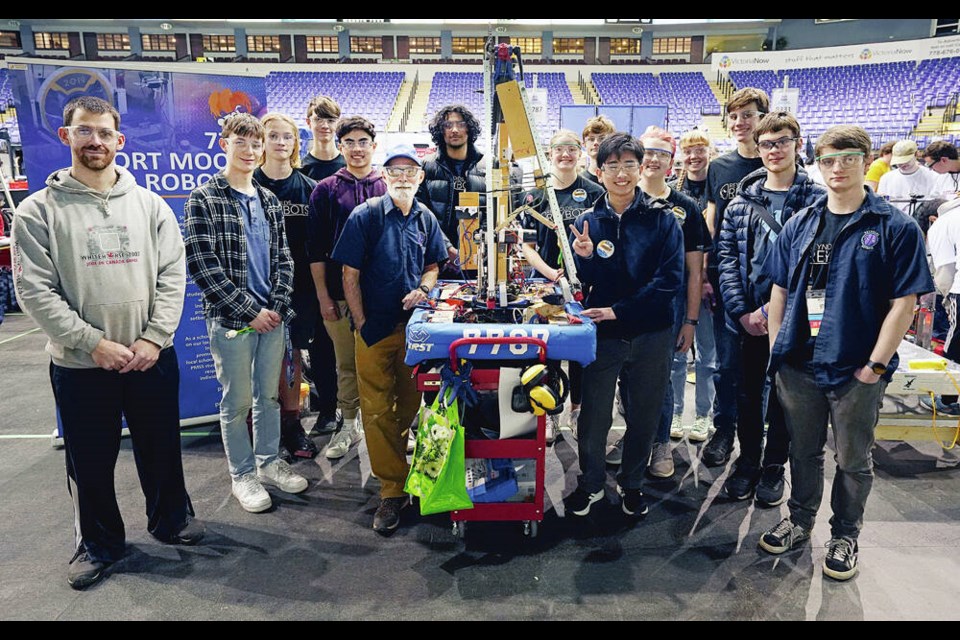For the last six weeks, a group of teenagers has spent every moment of their spare time feverishly designing and building a robot for a competition that will give them bragging rights regionally.
If successful, they will face even fiercer competitors at a championship event later this year.
They call themselves the Reynolds Reybots — 20 Grade 8 to 12 students who belong to the Reynolds Secondary School robotics club.
They’re one of three local teams competing in the annual FIRST Robotics Canadian Regional Competition, where teams have six weeks to design and build a robot that can perform a particular function.
The robots are tested in two days of matches between teams from around the world at Save-on-Foods Memorial Centre, culminating in a final match on Friday morning.
“After six weeks of work, you get to experience two-and-a-half minutes of sheer pandemonium and panic,” said Nicholas Bernhardt, 15, one of the members of the team.
Teams have travelled to Victoria from Australia, Taiwan, the United States and across Canada.
The end goal of the competition is to build a better robot than your competitors, but the real benefit is learning to work together, said Ian Koscielski, executive director of FIRST Robotics British Columbia.
“While the focus of the competition is building a robot, that is only a portion of the mission of the FIRST Robotics Competition,” Koscielski said. “The exercise forces the students to work as a team and to develop their soft skills. They have to form alliances with other teams to succeed.”
Established in 2001, the registered charity’s mission is to inspire students to pursue careers in science, technology and engineering. While the first competition was held in 2004 in Ontario, it wasn’t until 2018 that the event was held in B.C.
“While B.C., with 1,500 to 2,000 participants, is a younger region, it is catching up fast,” Koscielski said.
The Canadian Pacific Regional competition first came to Victoria in 2019.
Worldwide, more than 535,000 students from 98 countries take part in regional competitions, with qualifying teams meeting in Houston, Texas, for the championship.
At the beginning of the competition, all the teams are given a standard kit of parts they can use to design their creation and a set of rules.
While the students use their creativity to build their robots, they are also tasked with attracting sponsors to fund some of the components needed to make their creations come alive.
Some of the teams from the U.S. receive funding from NASA.
“There is a $600 US limit for components and rules around how to value an item, but at the end of the day, it’s an honour system,” said Nicholas. “It’s an amazing community. Another team may come by to ask if we have a particular item, and we will help them if we can. We see it as gracious professionalism.”
Amid the hubbub and excitement of multiple hands making last-minute adjustments and agonizing over a solution to a problem is Sarah Masse, who handles social outreach for the team.
While her teammates write code to make the robots perform the required functions to get the task done, she writes stories and posts on social media about their exploits.
“We work into the night a number of times and I video them working,” said Masse, who is 15. “Some of the team use those videos to show to their parents, as proof of what they were doing when they go home late, night after night.”
She said the team’s social outreach has “improved 10,000-fold” since she took over and started keeping a record of everything the team has done.
Regardless of whether their teams win or lose, the experience prepares them for challenges they will face when they attend university, where the attrition rate for students who enroll in engineering is roughly 50 per cent, said Koscielski.
To see how the team scored in the competition, as well as videos of their matches, go to thebluealliance.com/team/7787.



